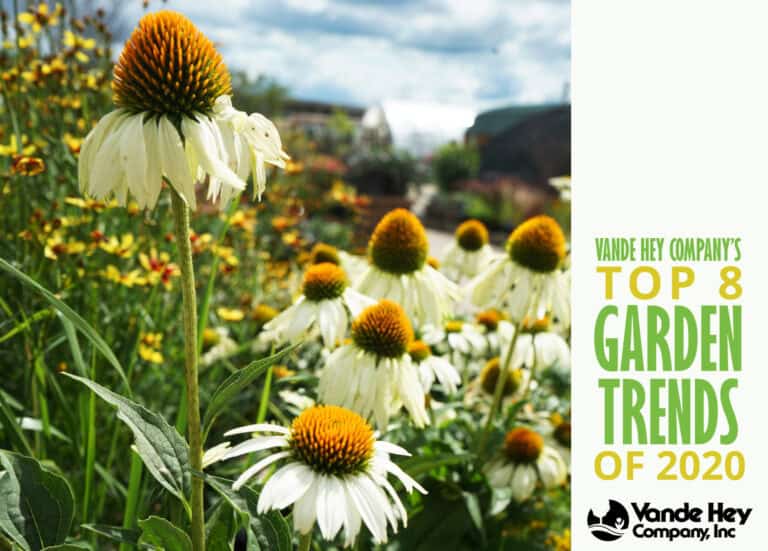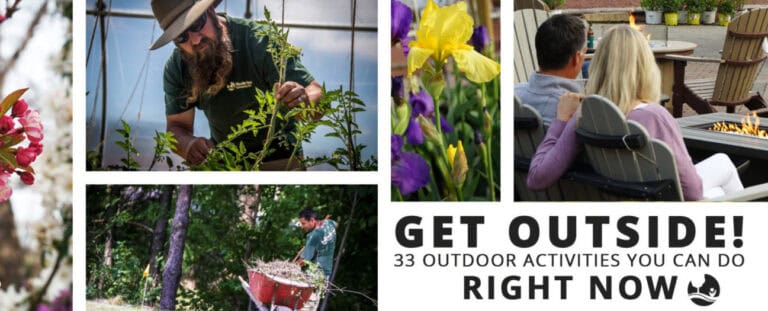![]() Garden
Garden
![]() Landscape Management
Landscape Management
![]() Tips
Tips
Landscaping Management:101 March
By Vande Hey | March 16, 2020


You’re sitting inside waiting for the snow to melt and the ground to thaw so you can finally get started on your garden and landscaping—it’s kind of like watching paint dry, but worse. Someone keeps adding paint (or in our case, snow). What’s the solution? Stop staring at the paint! Our horticultural experts at Vande Hey Company have a few practical things you can do right now. Let’s get up off the couch and get started!
EARLY MARCH
If you were still watching paint dry in early March and haven’t started yet, you can start these things now!
- Early March is a good time to start making cuttings of fast-growing annuals such as lysimachia, coleus, and sweet potato vine.
- Even though it can be tempting, be careful this time of year not to remove mulch or evergreen boughs from perennials too early. If we get cold temperatures, your plants could easily be harmed.
- If you have been storing geraniums in cool dark places, you can pot them up, cut them back, and start watering again.
- As always, here’s your friendly reminder to feed your house plants every 2-3 weeks. March’s longer days and shorter nights will result in more rapid growth, but if it is a cloudy month, plants will still use less water and fertilizer.
MID MARCH
- Start slow-growing annuals indoors if you have good light. Not sure if you have good light—there’s an app for that. Search your phone’s app store for a light meter app!
- If you have dormant sprays to combat insect pests, be sure to use them before new growth starts. Make sure temperatures will be above freezing for 8-12 hours after spraying to avoid damaging stems and needles.
- Divide and conquer. Dahlia clumps and cannas can be split and added to pots to get growing.
- Clean up your garden as the weather warms. Be patient; using a blowdryer is not efficient, so wait for the snow to melt on its own then get after it!
- Remove mulch from spring flowering bulbs such as daffodils and crocus.
- Cultivate and fertilize asparagus beds if the ground is not frozen.
- Get pruning! The end of the dormant season is the best time to prune almost all trees and shrubs. Pines are one of the only exceptions; let young pine needles expand to about half their full size before pruning.
- Prune raspberries, thinning the canes so there is about six to eight per foot of row, and remove the upper 20% of the cane. This will promote new growth and more fruit for the berry season. Remember those raspberry mojitos we talked about in our 2020 Garden Trends? Mhmmm.
LATE MARCH
- Remove winter protection from roses as soon as the danger of frost is past.
- Sprinkle systemic insecticide granules within the dripline of birch trees to prevent birch leaf miner. We recommend doing this with a systemic drench just as the trees start to break bud.
- Sow seeds indoors for vegetables including broccoli, cabbage cauliflower, celery, eggplant, and head lettuce. Lettuce know if you have questions…
- Start thinking about lawn care. Check out your lawn as the snow clears to check for damage, especially from voles (mice), and think about what type of lawn care you want to do this year. April is National Lawn Care Month!
Even though these are just a few suggestions, we hope you can satisfy some of your gardening itch before spring fully opens up. These tips are definitely more exciting than watching paint dry!
Have questions? Call us. Need help? Call us. Our team of experts is here for you.



